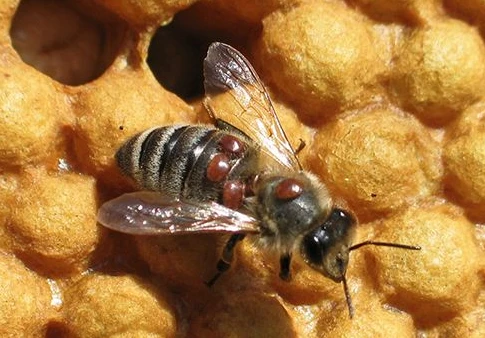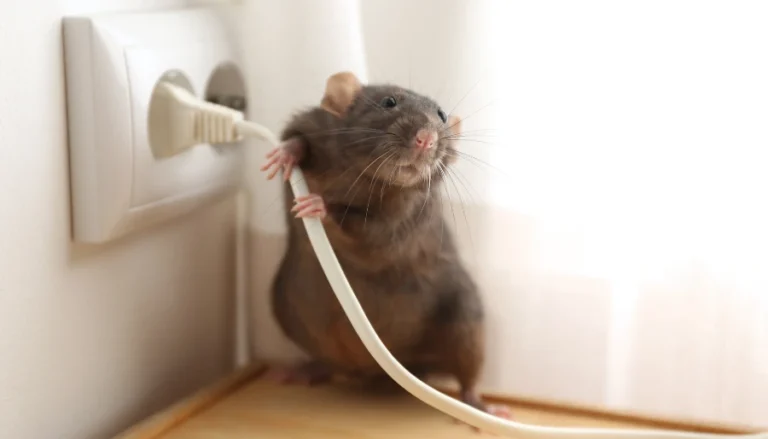America’s honeybees have endured a staggering loss, facing the second highest death rate on record, with nearly half of managed colonies perishing, according to an annual bee survey conducted by the University of Maryland and Auburn University. Despite this alarming statistic, beekeepers are employing extraordinary efforts to stay afloat, ensuring the United States honeybee colony population remains relatively stable.
Honeybees play a vital role in our food supply, pollinating more than 100 crops that nourish us, including nuts, vegetables, berries, citrus fruits, and melons. Unfortunately, a combination of factors, such as parasites, pesticides, starvation, and climate change, continues to contribute to significant die-offs.
Last year’s annual loss of 48% surpasses the previous year’s 39% and the 12-year average of 39.6%. However, it falls just short of the 50.8% mortality rate recorded during the 2020-2021 period, as reported by the Bee Informed Partnership, the nonprofit research group that funded and administered the survey. Disturbingly, a substantial portion of beekeepers surveyed revealed losses higher than the acceptable 21% over winter.
Jeff Pettis, former government bee scientist and president of the global beekeeper association Apimondia, expresses concern over the loss numbers, stating, “This is a very troubling loss number when we barely manage sufficient colonies to meet pollination demands in the U.S.” Recognizing the arduous task faced by beekeepers to rebuild their colony numbers each year, he emphasizes the hard work necessary to sustain the industry.
While the overall bee colony population remains relatively steady, this is primarily due to the efforts of commercial beekeepers who split and restock their hives, acquiring new queens or starter packs for colonies. Nonetheless, this process is expensive and time-consuming, requiring significant investment.
The situation today is not as dire as it was 15 years ago, as beekeepers have acquired knowledge on how to recover from substantial losses.
According to Nathalie Steinhauer, the lead author of the survey and a bee researcher at the University of Maryland, “The situation is not really getting worse, but it’s also not really getting better. It is not a bee apocalypse.”
Despite the annual setbacks, the current scenario is vastly different from what experts anticipated in 2007 when managed pollination was on the brink of collapse. The honeybees have managed to persist in the face of environmental threats, although ongoing challenges persist.
Jay Evans, a research entomologist at the U.S. Department of Agriculture, acknowledges the variability in colony losses, with some commercial beekeepers experiencing up to 80% losses while others fare better.

Factors such as the parasitic mite Varroa destructor, adverse weather conditions, and queen issues contributed significantly to the challenges faced by beekeepers over the past year. Pesticides exacerbate the situation, rendering bees more susceptible to diseases and diminishing their foraging behavior.
Varroa mites, resembling flat creatures that cling to bees, weaken their immune systems and make them susceptible to viral attacks, resulting in mass mortality.
Even small infestations of these mites, as low as 1% or 2% in a colony, can have devastating consequences.
Steinhauer underscores the ongoing struggle against this ever-evolving enemy. Bee survival is also affected by the lack of diverse landscapes and monoculture agriculture, which deprive bees of essential food sources. Additionally, pesticides and extreme weather events exacerbate the challenges faced by bee colonies.
Unusual warmth in January in the Washington, D.C. area disrupted bees’ winter routine, leading to subsequent issues when temperatures returned to cooler levels. These instances highlight the impact of climate change on bee colony survival, a phenomenon that often goes unnoticed but poses a significant threat.
The demand for pollination services from commercial bee colonies continues to grow, placing additional burdens on beekeepers, who must compensate for losses. According to the U.S. Department of Agriculture, insect-pollinated plants contribute to 35% of the human diet, with honeybees responsible for 80% of that pollination.
The reliance of our agricultural industry on these colonies underscores the stress endured by both beekeepers and their invaluable bees.
Each year, beekeepers invest immense effort in fulfilling pollination contracts, reinforcing the critical role they play in sustaining our food supply.
As we navigate the challenges posed by environmental factors and work towards finding sustainable solutions, it is crucial to recognize and support the tireless efforts of beekeepers who labor to protect these essential pollinators and safeguard our agricultural ecosystem.






















